
Last Updated on
By Tony Martins
Much like the chicken & egg conundrum, I’m not sure which came first, the broadhead or its name. What I am sure about is the original RAMCAT broadhead does live up to its self-descriptive name and slogan – it “Hits like a Ram, Cuts like a Cat.” This broadhead is also one of the most accurate I have used. With performance features like these, all the bowhunter needs to do is put his/her RAMCAT tipped arrow on target for a quick kill and short recovery.
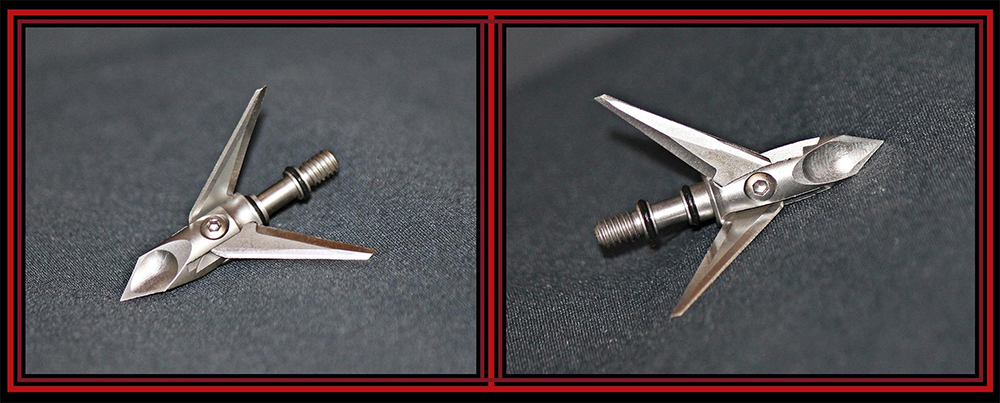
Mechanical or Fixed-Blade
The argument over which broadhead type is better – mechanical or fixed-blade – will probably continue for as long as there are bowhunters. Each type has its advantages and disadvantages, and I have personally taken many animals – small, medium and large – with both types. Fixed-blade broadheads are often favored for their reliability and durability. Mechanicals feature replaceable blades and are known for accuracy and large wound channels, when expandable blades deploy properly. Sometimes they don’t however, and thus some regulatory agencies as well as some outfitters, do not allow mechanical broadheads. If a blade opens in flight, both accuracy and lethality can be compromised.
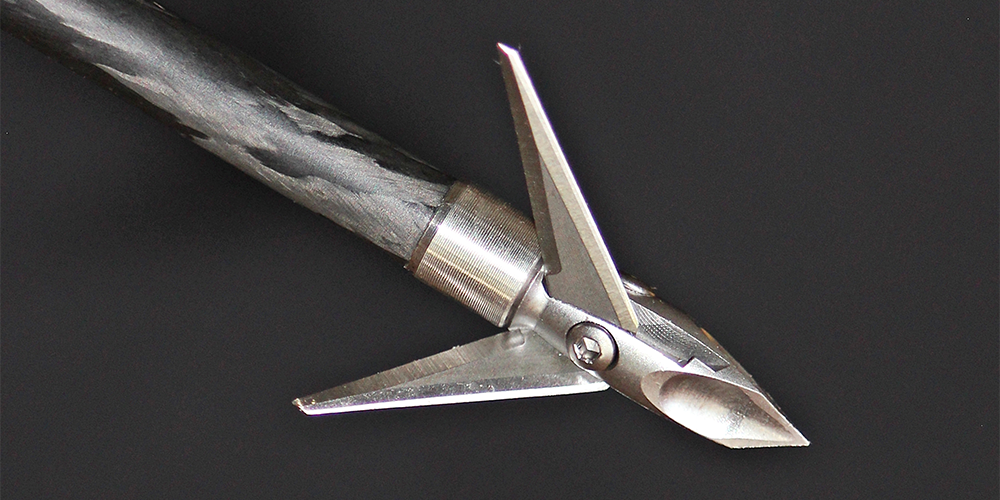
Ramcat distinguishes its original broadhead from mechanicals and fixed-blades with “pivoting” blades. The replaceable blades are attached to the body with a screw, which holds each in the traditional forward-angle position during flight. Impact pressure causes the blades to loosen ever so slightly, allowing the double-edged blades to pivot about 75-degrees on the screw if reverse pressure is applied. Thus, if the arrow does not pass through, the blades will enlarge the wound channel while the animal continues to move – in effect, cutting their way back out as they pivot forward. In my article Killer Arrows on the GRITR Sports blog, I noted that broadhead tipped arrows “…kill by cutting a wound channel with sufficient penetration to cause fatal blood loss.” The more tissue the blades cut, the more lethal the broadhead. With 3 scapel-like 0.032-inch stainless steel blades cutting in both directions, Ramcat calls it “Back-Cut Technology.” I call it one lethal broadhead!
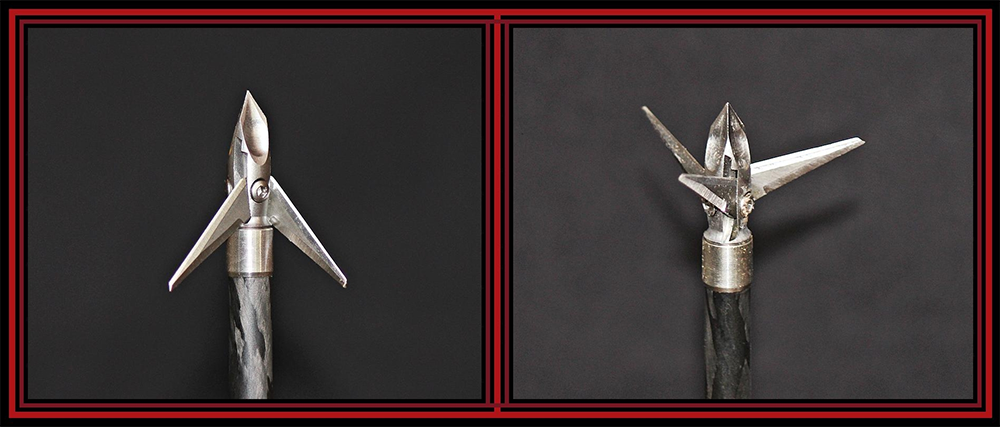
Penetration
So, how do they penetrate? Ramcat’s original head is a patented “concave scoop” design that creates an airfoil in flight to resist wind planing. On impact, these scoops turn the head into a hydrodynamic plow. In theory, the airfoils created by the scoops push body mass outward, away from the arrow shaft to create a wound channel that is much larger than the cutting diameter, resulting in deep penetration. Although I have not yet taken a big game animal with a Ramcat, target penetration is excellent. From 40 yards my 70-pound bow routinely drives 27-inch Ramcat tipped arrows 22-23 inches through a Block Black target. This target has previously stopped about 2000 arrows, so its density near the center is less than when new. Nevertheless, seeing those Ramcats sticking 4-5 inches out the back of the 18-inch deep target is impressive.
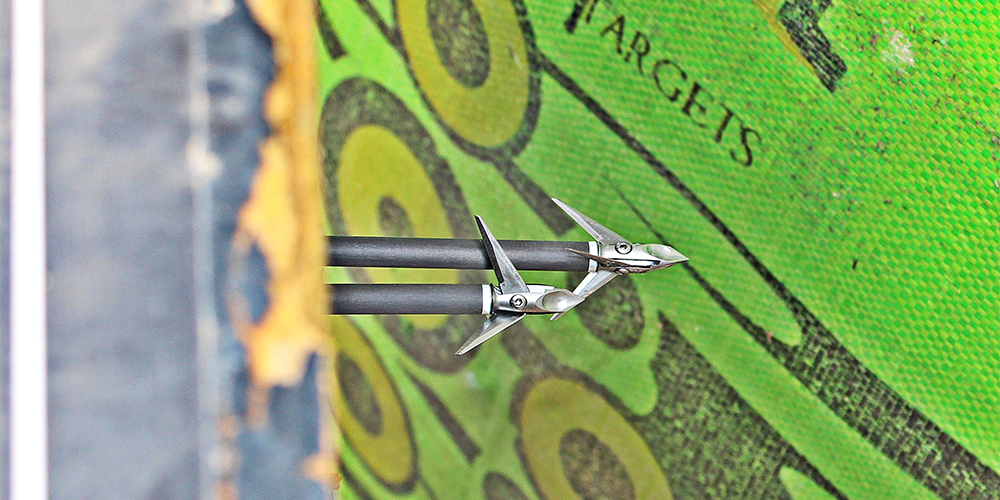
Accuracy
Accuracy is cited as the top reason that bowhunters choose mechanical over fixed-blade broadheads. Fletching acts to steer the arrow in flight, but fixed-blade broadheads – particularly those with large blade surface areas – can counteract steering effects of the fletching, causing the arrow to fly offline. This is known as planing. An aerodynamic head design helps to resist planing, and most bows can be tuned to a particular broadhead for the best accuracy. This can require some time and effort however, while most mechanical broadheads promise “field point accuracy” right out of the package.
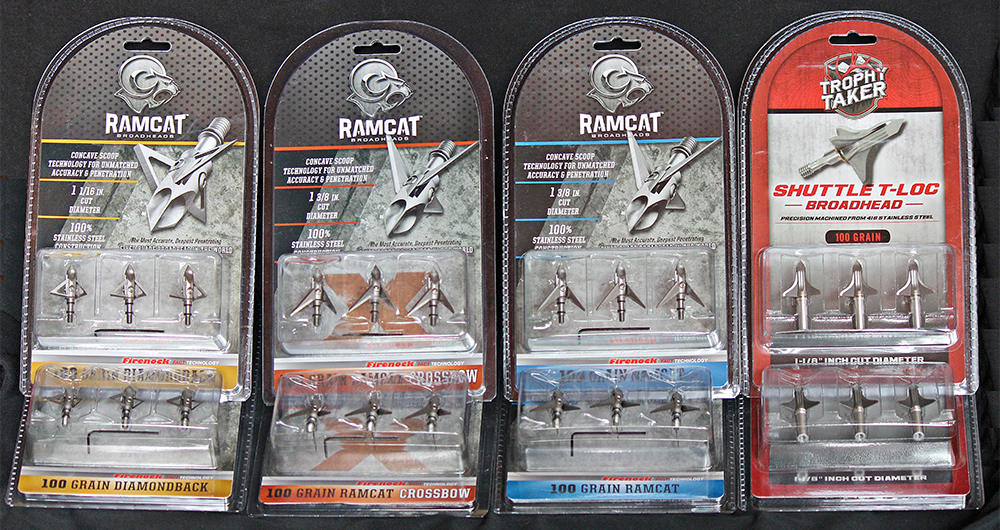
Ramcat is advertised as “the first fixed broadhead that flies exactly like a field point when shot from any bow, at any speed.” Of course, I had to test this claim for myself! Using the same 5 arrows for 5-shot groupings with both field points and original Ramcats, I have no argument with this claim. In fact, the broadheads grouped so well in my first group that on subsequent groups I had to remove each arrow from the target before releasing the next, to avoid destroying the arrows and damaging the broadheads! Arrow holes were marked with short plastic straw pieces so that each 5-shot group could be accurately measured. On average, the Ramcats hit less than 1-inch to the left and about 1-inch lower than the field points from 40 yards, measured at the center of each group. Group size averaged 2-7/8” for field points, and 3-3/8” for Ramcats, from two different bows shooting 315 and 270 feet-per-second, respectively. This is convincing evidence that original Ramcats fly like field points and are as accurate as any broadhead I have ever used.
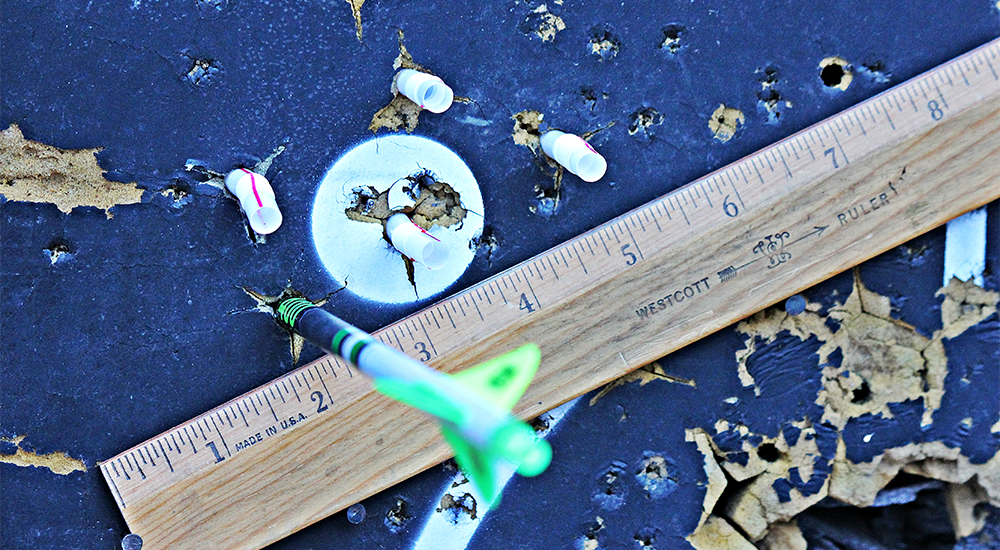
So what makes the Ramcat so accurate? Several innovative design elements are responsible for this performance. First, the concave “scoops” on the Ramcat tip that facilitate penetration also assist accuracy, through an “airfoil” aerodynamic effect that prevents wind planing. Aerodynamics are also enhanced by blade design and positioning. Blades are cantilevered over the arrow shaft and offset in the broadhead body to create a vortex cutting effect in tissue, as well as in flight through the air. And finally, two o-rings are used on the threaded shank to insure the broadhead is concentric in the arrow shaft insert – perfect alignment = straighter arrow and truer flight. Ramcat calls this “Firenock Aero Concentric Technology” and it eliminates any thread slop for a tight fit.
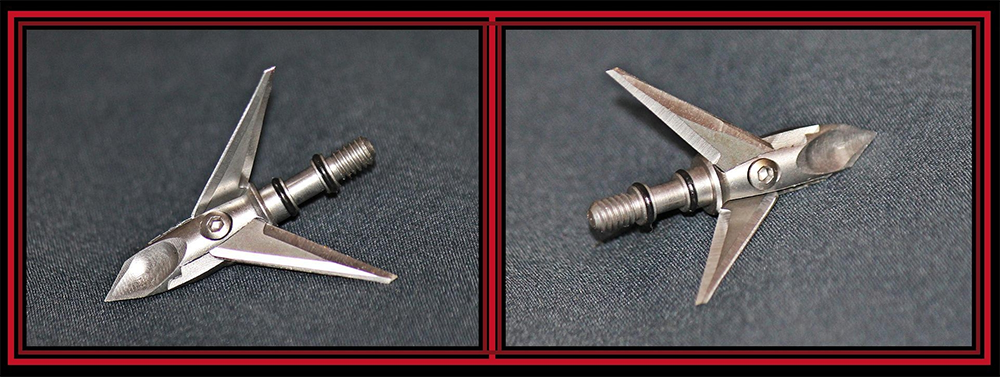
Equipment
With their large 1-3/8” cutting diameter, Ramcats require indexing to insure clearance with the arrow shelf and riser on compound bows when drawn. Practice drawing is recommended, with the broadhead indexed at the 9:00 o’clock position. If cutting new arrows, the company recommends a length that is 1-1/4” longer than the arrow shelf at full draw to insure that the broadhead stays in front of the riser. They also recommend that blades be kept tight in the “loaded” position at all times. A small hex-head wrench is provided with each broadhead 3-pack, for tightening the left hand threaded screws. It should be noted that some quivers are too small to accommodate the large diameter Ramcats. The crossbow version of the original design features slightly oversized o-rings for a better fit in crossbow bolt inserts, and solid hard-hitting performance. A “Deep Six” version with special threading to fit the new Easton Deep 6 Micro Diameter Carbon Injection Arrow is also available. All three Ramcat Broadhead versions come in 100 and 125-grains.
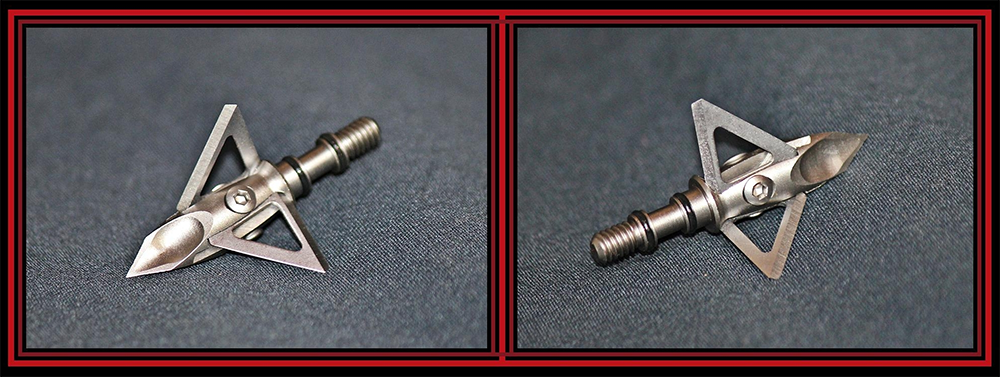
It should be noted that a few states have classified the original Ramcat broadhead as a mechanical, presumably because of the “pivoting” blade design. These include Alaska, Idaho and Oregon. Thus, the Diamondback was created to be the first truly fixed-blade broadhead in the Ramcat line-up. It features a 1-1/16” cutting diameter, the same flight characteristics, and many of the performance features of the original Ramcat. These include the patented concave “Airfoil System” head design for accuracy and deep penetration, Back-Cut Technology with the front and back edges of each blade sharpened for devastating wound channels, and the dual o-ring Firenock Aero Concentric Technology as well. I have used Diamondbacks to take small game like rabbits with the Benjamin Airbow. Despite tremendous energy generated on impact of the 450 feet-per-second, 375-grain Airbow arrow, the broadhead ferrule holds up well, and blades are easy to replace when necessary. Diamondbacks are available in 100 and 125-grain 3-packs, in both standard and Deep Six sizes.
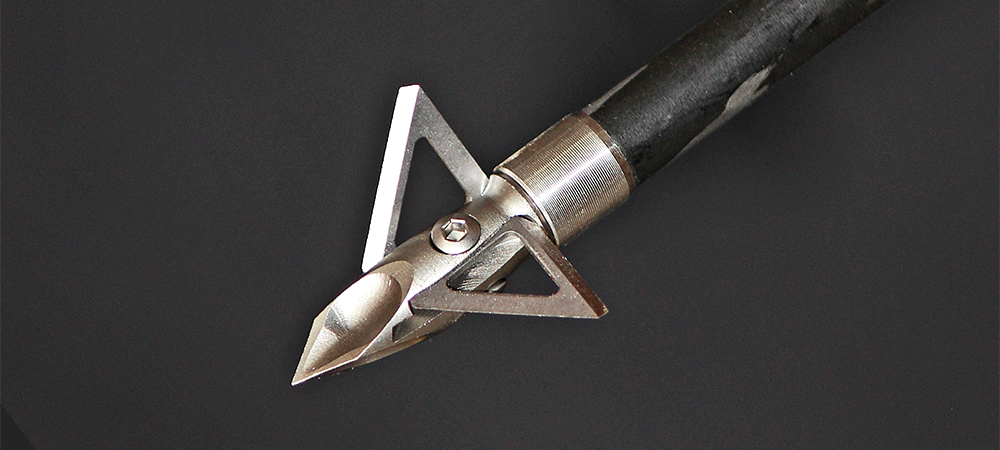
Ramcat is one of several companies under the ARCUS Hunting umbrella. Another is Trophy Taker, which makes archery accessories including arrow rests and broadheads. The Shuttle T-LOK is an interesting broadhead that arrived with the selection of Ramcats for testing. With the toughness and performance of a solid head in a replaceable blade design, Shuttle T-LOK comes with a “No Lost Blades” guarantee. The patented T-shaped connection between the three blades prevents separation of the blades from the ferrule – even when fired into solid bone, concrete and metal! This claim caught my attention, so I tested them on arrows fired at 450 feet-per-second from a Benjamin Airbow. Although a couple of the special Victory ICE carbon arrows were destroyed, these broadheads survived multiple impacts with rock and hardpack during a prairie dog hunt. The non-vented blades are made from heat-treated 416 stainless steel, nearly twice the thickness (0.060”) of Ramcat blades. And, the sweeping blade angle increases the cutting surface without increasing overall size for deep, devastating penetration. Shuttle T-LOK is available in both 100 and 125-grain models, with cutting diameters of 1-1/8” and 1-3/16” respectively.
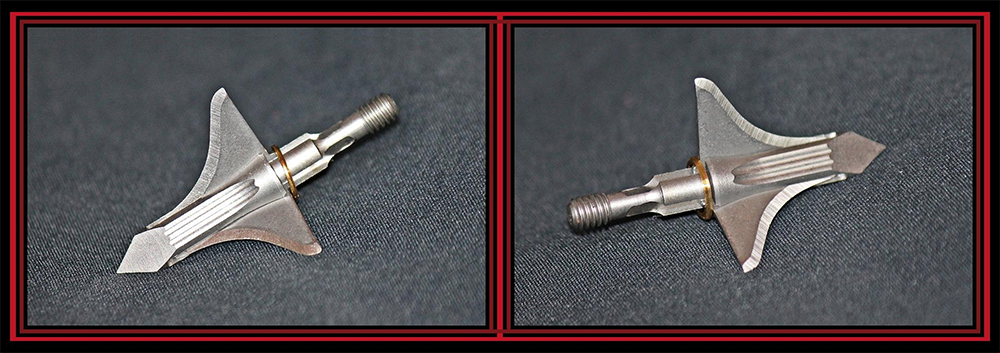
So, what broadhead is the best? That depends on how you hunt (from a treestand/ground blind/spot-and-stalk in open country, etc.), what you hunt (whitetails and hogs/tough game like bear and elk, etc.) and to some extent, where you hunt. The setup and performance of your bow are additional considerations for selecting the best broadhead for you, and don’t underestimate the confidence factor. A versatile broadhead that possesses the best performance features of both fixed-blades and mechanicals is a great choice, so trust that I will be using the original Ramcat broadheads for all my big game bowhunting this coming season.




Leave a Reply